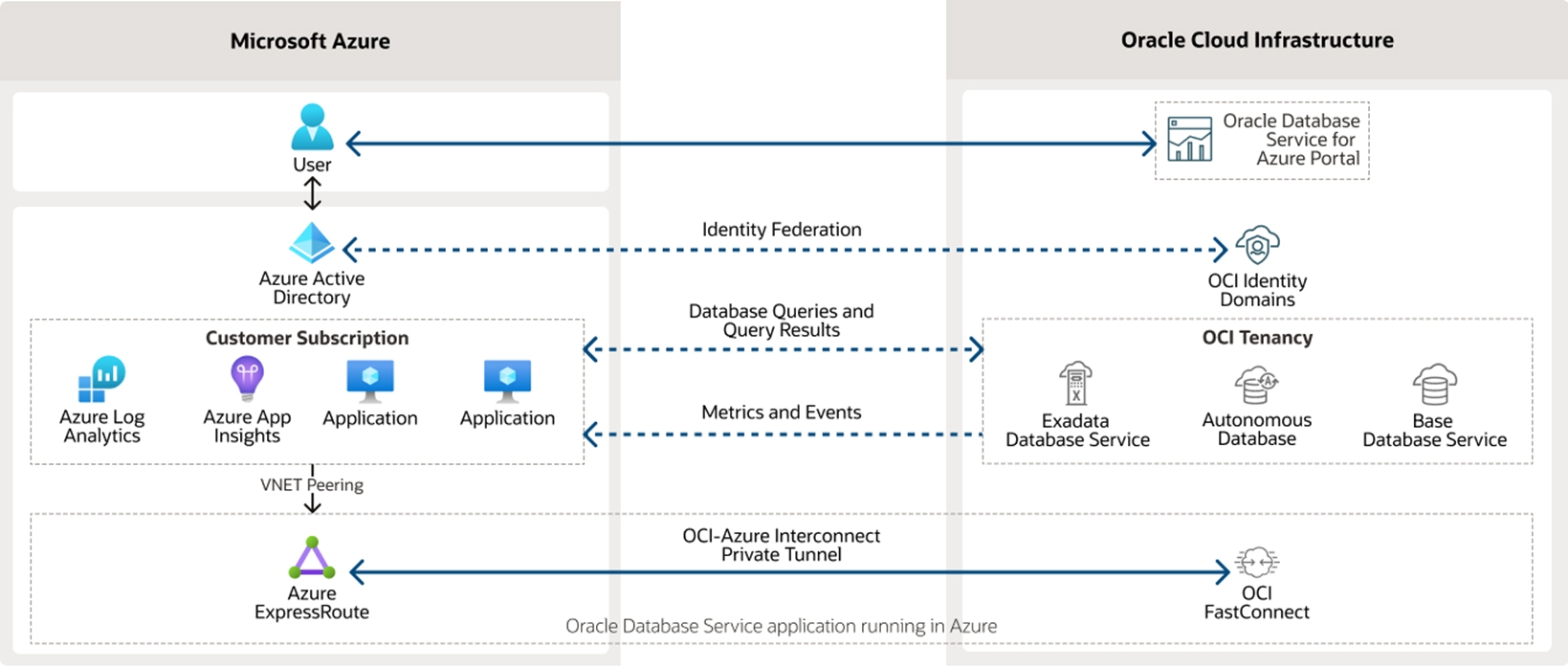Overview
Learn basic concepts about the OracleDB for Azure service model, including information about the service's cloud-to-cloud networking, identity management, service metrics, and the OracleDB for Azure portal.
With OCI multicloud's OracleDB for Azure, your database resources reside in an OCI account that is linked to your Azure account through Oracle Interconnect for Microsoft Azure, an Oracle-managed tunnel connection.
ODSA connects components in the customer's Azure and OCI tenants as shown in the following diagram.

To perform basic database and infrastructure management tasks, you use the OracleDB for Azure portal, which is an OCI interface. You login to the ODSA Portal using your Azure credentials, and you do not need to create and maintain a separate set of credentials for ODSA. Administrators can optionally federate the Azure tenant's Azure Active Directory (AAD) with an OCI identity domains, so that users can log into the OCI Console using the same Azure credentials used for Azure and the OracleDB for Azure portal.
Though OracleDB for Azure databases reside in OCI, Azure administrators and developers work mainly in Azure, connecting their applications to Oracle databases using connection strings, Azure's standard way of exposing Azure resources to applications.
OracleDB for Azure does the following for administrators and developers working in their Azure environment:
- Streams database metrics to Azure Application Insights, so developers have access to them in Azure when creating applications dashboards and monitoring database performance.
- Streams database events to Azure Log Analytics enabling developers to monitor these events and create alerts on certain events.
- Creates a custom Azure dashboard for each database providing Azure users with information about the database resource, connection strings, a link to the database in OracleDB for Azure, and graphs for the standard database metrics.
Administrators and developers use the OracleDB for Azure portal only when interacting directly with the Oracle Database services exposed to Azure through OracleDB for Azure. With OracleDB for Azure, Azure administrators and developers don't have to learn OCI. They work in a bespoke portal for Oracle databases that looks and feels like the Azure tools they're already familiar with.
Communication between the two cloud environments happens through the peering of an Azure Virtual Network with OracleDB for Azure's Virtual Cloud Network. You choose the Azure Virtual Network you want to use when you provision OracleDB for Azure database systems. Network traffic moves over the OCI Interconnect for Azure. OracleDB for Azure configures DNS on both sides of the Interconnect to enable bi-directional communication between applications in the Azure tenancy and database resources in OracleDB for Azure.